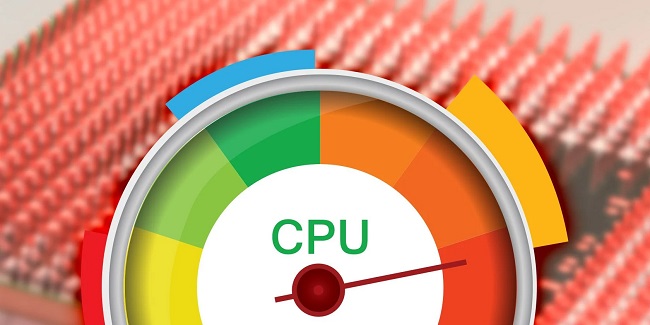The WMI Provider Host error eats up a lot of your computer’s processing power. WMI Provider Host stands for Windows Management Instrumentation Provider Service, and its primary purpose is to assist in the execution of computer applications.
As a result, if there is a problem with WMI Provider Host, high CPU usage occurs, rendering many of the PC’s functions ineffective. After updating your PC from Windows 7 to Windows 10, you may notice this behaviour or problem.

Error
WMI Provider Host High CPU Usage on Windows 10
On Windows 10, 8, and 7, the WMI Provider uses a lot of CPU. The WMI Provider Host High CPU Usage problem, on the other hand, can be readily resolved by following the steps outlined in this article.
Solution 1: Restart WMI-related Services
After you’ve finished restarting the WMI service, go ahead and restart any other connected services by following these steps:
Turn on your computer and then go to Start > Command Prompt (Admin). Next, type the following commands one by one in the command prompt window, pressing enter after each command:
wscsvc net stop iphlpsvc net stop iphlpsvc net stop iphlpsvc net stop iphlpsvc net start wscsvc net start iphlpsvc Winmgmt
Step 2: Once you’ve completed this, reboot your computer to see if the WMI Provider Host High CPU Usage error has been resolved.
Read Also:
Solution 2: Restart the Windows Management Instrumentation (WMI) Service
The problem is almost always with your computer’s WMI Provider Host Service, which may be taking up too much space and producing issues. As a result, you might want to try restarting your WMI Service:
Step 1: Turn on your computer and hit the Windows + R key combination to bring up the Run dialogue box. Type services.msc into the run dialogue box and press the Enter key. Next, press the W key to open the services console window and look for the Windows Management Instrumentation Service.
Step 2: After you’ve found the WMI service, right-click it and select the restart option to restart it. You can also choose to discontinue using the service, although I would not recommend it.
Solution 3: Use Event Viewer
This can be accomplished by following the steps below:
Step 1: First, you must launch the Event Viewer, which can be done in one of two ways depending on your computer’s operating system:
You can find Event Viewer under the Start Menu if you’re using Windows 7 or an earlier version of Windows. If you’re running Windows 8, 8.1, or 10, you can discover event viewer by using the Windows + X key combination, which will open the WinX Menu. From the menu that displays, select Event Viewer.
Step 2: Select View from the toolbar in the Event Viewer window > Enable the Show Analytic and Debug Logs option. You’ll then be redirected to a new window with options on the left panel, from which you can choose Application and Services Logs > Microsoft > Windows > WMI-Activity.
Step 3: Select the Operational list by double-clicking on the WMI Activity option, which will expand its contents. Next, look for any errors, and if you find one, click on it to see the error’s details at the bottom of the window. In the specs box, go to the General tab and look for the ClientProcessId term. Write down the number.
Step 4: Finally, close Event Viewer and launch Task Manager by hitting the Windows + R key combination > typing taskmgr and clicking OK. Next, go to the “Services Tab” in the task management window and examine whether there is another service with the same Process ID (PID) as the ClientProcessID term.
As soon as you’ve identified the malfunctioning service, disable it right away. Finally, go to Control Panel > Programs & Features and uninstall the problematic service.
Solution 4: Clean Up Your Bootstraps
Because high CPU utilisation by WMI Provider Host might sometimes be caused by a specific application, you can conduct a clean boot and then isolate the problematic application. Follow the steps below to try this method:
Step 1: You must first log in to your computer using an Administrator account. Press the Windows + R key combination to bring up the Run Dialogue Box.
Then, in the Run dialogue box, type “msconfig” and press the Enter key. Next, in the next window that appears, pick Services, and then uncheck the “Hide all Microsoft Services” button in the left corner bottom.
Step 2: Finally, press OK after selecting the Disable All option. Click the “Open Task Manager” option under the “Startup” tab.
Click the Startup button in the Task Manager window, then choose the applications that have Enabled written next to them and disable them all. Repeat steps 1–8 for each application listed, then restart your computer.
Step 3: Now that your machine is in Clean boot mode, double-check to see if the problem has been resolved.
If the error has been resolved, it was most likely caused by a third-party programme or service. Then, one by one, enable the services; if the high CPU utilisation occurs again, disable those services. Finally, uninstall the application or service that produced the WMI Provider Host High CPU Usage issue and reinstall it.
Read Also:
The Last Word
So, if you’re experiencing WMI Provider Host High CPU issue while working on your computer, these are some of the best and most commonly utilised solutions. Remember to follow the steps in the article carefully and in the order that they are listed.
